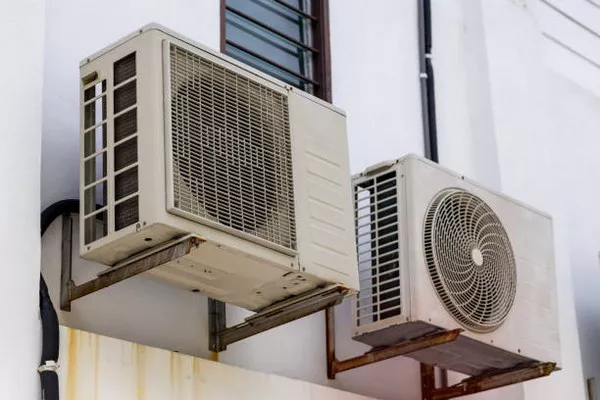In the realm of automotive engineering, various components work in harmony to ensure the smooth operation of a vehicle. One such crucial component is the car compressor, responsible for vital functions such as air conditioning and powering pneumatic tools. Understanding the workings of this device sheds light on its significance within the automotive ecosystem.
Introduction to Car Compressors
Car compressors play a pivotal role in the operation of a vehicle’s air conditioning system. They are also integral to other functions, such as powering pneumatic tools and assisting in the operation of braking systems in some vehicles. Essentially, a car compressor is a mechanical device designed to increase the pressure of a gas, typically air, by reducing its volume.
Types of Car Compressors
Reciprocating Compressors: These compressors use a piston within a cylinder to compress the air. As the piston moves downward, it creates a vacuum, drawing air into the cylinder. Upon upward movement, the air is compressed and forced out through a discharge valve.
Rotary Compressors: Unlike reciprocating compressors, rotary compressors operate using rotating mechanisms. They include variants such as vane, screw, and scroll compressors. In a rotary compressor, air is compressed through the action of rotating elements within a housing, resulting in a continuous flow of compressed air.
The Functioning of Car Compressors
Understanding the inner workings of a car compressor involves delving into the principles of thermodynamics. When a compressor operates, it essentially takes in low-pressure refrigerant gas from the evaporator, compresses it to a high pressure, high-temperature gas, and then delivers it to the condenser. This process facilitates the transfer of heat from the cabin air to the outside environment.
Compression Cycle
Suction Stroke: During this phase, the piston moves downward, creating a low-pressure zone within the cylinder. This low pressure draws refrigerant vapor into the cylinder from the evaporator.
Compression Stroke: As the piston moves upward, the intake valve closes, and the refrigerant vapor is compressed. This compression increases the pressure and temperature of the refrigerant.
Discharge Stroke: Once the refrigerant reaches the desired pressure, the discharge valve opens, allowing the compressed refrigerant to exit the cylinder and flow to the condenser.
Components of a Car Compressor
A car compressor comprises several key components that work in tandem to facilitate the compression process and ensure efficient operation. Understanding these components provides insight into the complexity of the system.
Cylinder and Piston Assembly
The cylinder and piston assembly form the core of a reciprocating compressor. The piston moves up and down within the cylinder, creating the necessary pressure differentials to compress the refrigerant.
Intake and Discharge Valves
Intake and discharge valves regulate the flow of refrigerant into and out of the compressor cylinder. These valves open and close in synchronization with the piston movement to facilitate the compression cycle.
Drive Mechanism
The drive mechanism, typically a belt or direct drive system, transfers power from the engine to the compressor. This ensures that the compressor operates synchronously with the engine, maintaining optimal performance.
Lubrication System
A lubrication system ensures smooth operation of the compressor by reducing friction between moving parts. It typically involves circulating oil throughout the compressor assembly to lubricate bearings and prevent wear.
Maintenance and Troubleshooting
Like any mechanical component, car compressors require regular maintenance to ensure longevity and optimal performance. Additionally, understanding common issues and troubleshooting techniques can help diagnose and address compressor-related problems effectively.
Regular Inspection
Routine inspection of the compressor, including checking for leaks, proper belt tension, and abnormal noises, can help detect potential issues early and prevent major failures.
Refrigerant Level Check
Maintaining the proper refrigerant level is crucial for the efficient operation of the compressor and the overall air conditioning system. Low refrigerant levels can lead to reduced cooling capacity and increased compressor workload.
Lubrication
Ensuring the compressor’s lubrication system is functioning correctly is essential for preventing premature wear and failure of moving parts. Regular oil changes and inspection of oil levels and quality are recommended.
Troubleshooting Common Issues
Common compressor issues include inadequate cooling, abnormal noises, and compressor clutch failure. Diagnosing these issues may require the expertise of a qualified mechanic, but basic troubleshooting steps such as checking refrigerant levels and inspecting drive belts can often provide valuable insights.
Conclusion
In conclusion, the car compressor serves as a vital component in modern automotive systems, playing a crucial role in air conditioning and other pneumatic applications. Understanding its operation and maintenance requirements is essential for ensuring optimal performance and longevity. By delving into its mechanics and components, drivers and technicians alike can appreciate the intricacies of this essential automotive component.
See Also What Is A Central Air Compressor? A Comprehensive Guide
FAQs
Q1: Why is my car compressor making unusual noises?
A1: Unusual noises from the compressor could indicate various issues, such as worn bearings, loose components, or refrigerant leakage. It’s advisable to have the compressor inspected by a qualified mechanic to diagnose and address the problem.
Q2: Can I recharge the refrigerant in my car’s air conditioning system myself?
A2: While DIY refrigerant recharge kits are available, it’s recommended to have refrigerant servicing performed by a certified technician. Incorrect refrigerant charging can lead to system damage and potential safety hazards.
Q3: How often should I replace the compressor oil in my car?
A3: The frequency of compressor oil replacement depends on various factors, including vehicle mileage, operating conditions, and manufacturer recommendations. It’s advisable to follow the maintenance schedule outlined in your vehicle’s owner’s manual or consult with a qualified technician for guidance.

